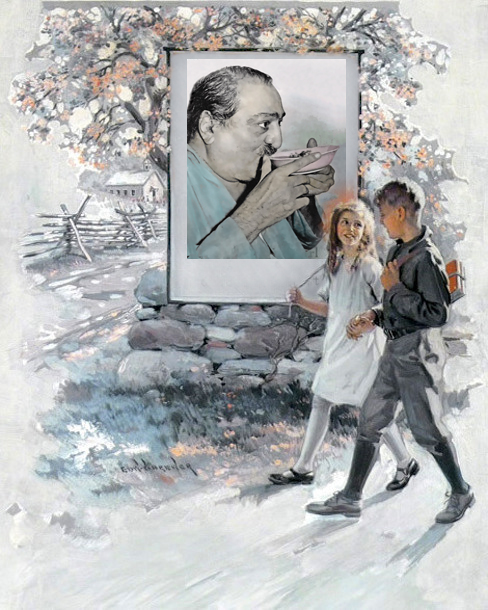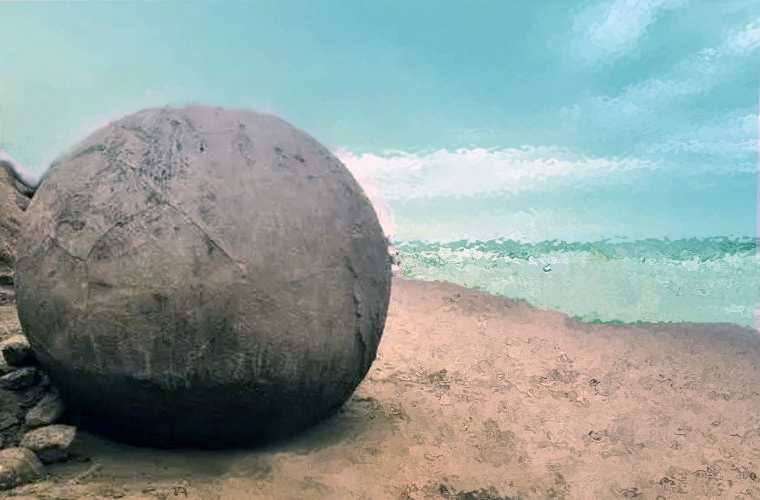ARTICLE MUSEUM

Margaret Craske
Meher Baba Center of Northern California Inc Newsletter Quarterly
Vol.19 Summer 1990
Margaret Craske
by Filis Frederick
Margaret was born in Norfolk, England in 1892. Her father was owner of a small coastal fleet. She started studying dance at an early age, and was always very athletic. At 18 she took up ballet and progressed very quickly. She studied with the famous Enrico Cecchetti in the private London studio he ran from 1918 to 1923, while he served as teacher for the Diaghilev Ballet Company. She says of Cecchetti, He was already old when I met him ... he was a darling ... he would bend his head and look under his eyes at you as if you were a criminal. And he did occasionally give us a tap with the stick. That's not legal now. He was a very fine teacher. One loved him.
At the end of her study with him, the Maestro gave her a certificate indicating she was qualified to carry on his teaching tradition - a rare honor. Today her own book, The Theory and Practice of Allegro in Classical Ballet ( 1920), coauthored with critic Cyril Beaumont, is a classic reference on the famed Cecchetti method.
She danced with the Diaghilev Ballet Company but her performing career ended abruptly with tuberculosis of the Achilles tendon. Thus she took up her incredible career as a teacher. She founded her own ballet school in London in the Thirties. She is philosophical about the loss of a stage career:I hurt a tendon. I couldn't dance for some time, and then I was getting older ... so what!" she says now.
In one year she lost five people dear to her - her parents, a teacher, a friend, a sweetheart. In a depressed mood she searched for a place to get away and heard about a retreat in East Challacombe, Devonshire, run by a man named Meredith Starr. When she went down there for a rest, she was much drawn to a photograph of Meredith's spiritual teacher, Shri Meher Baba. Meredith had recently been to His ashram in India and was expecting Him to visit England.
The small group of souls drawn to Starr's retreat had the privilege of being the first "aspirants" Baba contacted in the West. They included Mabel Ryan, Margaret's partner in her dance school, Delia de Leon, Kitty Davy, and Kim Tolhurst. Baba nicknamed a small group "Kimco", of which Margaret was a part. They were the "lighthearted" ones, as distinguished from those who were spiritually "serious", addicted to long hours of meditation, etc.
Margaret met Baba at the home of Kitty Davy in London. It was she who first opened the door for Him. At that moment, she saw Him as "a vision of gentleness, grace and love that touched the heart immeasurably." At the end of that momentous day, she says, "I only knew that from that moment, whatever rough treatment He may afterwards handed out, there has never been a moment's doubt as to His being the embodiment of Love and life."
In 1933 Baba called a group of women to India to be with Him permanently. Margaret gave up her ballet school to go. But they were all sent back in a few weeks. She reopened the school and continued teaching, taking part however in Baba's many trips to the West. She describes some of the episodes in her delightful book of reminiscences, The Dance of Love.
In 1939, the Master called her to India for the third time. Again, she gave up her ballet school. Baba's order was to come immediately after war broke out: He had to have someone cross the sea after war began. By a series of persistent maneuvers she got on the last boat out of England and arrived in India at a time when Baba was involved in creating the first Universal Spiritual Center at Bangalore.
Some young Baba lover said when you go to India you just exchange Western maya for Eastern maya. Now Margaret became one of the close groups around Baba - Easterners and Westerners mingling their sanskaras together. Margaret told me that one doesn't know how "Western" one really is until you live in the East. For example, she described some of the intense East-West battles in the kitchen over food and diet. One Eastern, lady insisted rice was pure protein! A Westerner, an avid vegetarian found a piece of pork in the canned beans, but the others showed their sense of humor - they took it out in the garden and buried it with great ceremony! Finally, the work of preparing separate menus became too tedious, and all agreed on a common menu. The same happened with religious holidays. There were a tremendous number and Baba insisted each should celebrate the others' holidays. Again, it got to be too much and just a certain number were celebrated by everyone.
Anita de Caro once told Margaret she was tired of maya and would like to get out of it. Margaret's answer was "But I love maya." I always loved her for that answer.
The seven years of life with Baba in India had many phases. She was one of the few Western women allowed to live intimately with the close Eastern disciples, Mehera, Mani, Dr. Goher, Naja, and Meheru. Ostensibly she joined them because of an illness that needed special care. How kindly Baba circumvented the jealousy of the other Western women! But there were also trying times; for example, when Baba ordered her to "disappear" whenever He came to visit the Eastern women - and without explanation. Surely a most humbling experience.
Baba had, in a playful moment, under the name of "Mr. Thomas", taken a dancing lesson from her (Santa Margherita, 1932) and acquitted Himself as gracefully as ever. "He had a perfect spine," she says, "And I know what a perfect spine is!"
One test for all the Western women was the presence of His beloved Mehera. Every Avatar has His "feminine counterpart" as part of His innermost Circle. But for some of the Western women, the privileged position of Mehera in His Circle evoked real jealousy, at times concealed as derogatory indifference, sometimes flaring in bad moods. It was quite a blow to your female vanity to find yourself "in second place" and some never quite got over it. It is to Margaret's credit that she saw through Baba's game, and harmonized with His chief woman disciple so well that Mehera was often in Margaret's care. Baba used to take Margaret's palm and trace an "M" on it, meaning "How is Mehera?"
When Baba, very abruptly in Debra Dhun in 1946, sent her back home, and she began her career with Ballet Theatre, His significant words "Your dancing is Mine" came true. Gradually a small group of dancers came to hear of Him through contact with her, and came to meet Him in 1952 in Myrtle Beach. Some well-known ballet stars have become close Baba lovers. In 1956, they gave a special ballet performance for Baba in the Bam at Myrtle Beach; and you can see them in the old I 958-movies carrying Baba about in His special chair.
After the stint with Ballet Theatre, Margaret was a moving force behind the Metropolitan Opera Ballet for nearly 20 years. At 90 years of age she was still teaching- at the Manhattan School of Ballet. Asking her once for spiritual "advice," she told me, "Be like a rag doll, then Baba can work through you." It's perhaps the technique of a good dancer, to be so relaxed, so balanced, maya can't tip you over ... You may even get to love her, like Margaret.
Copyright. From Meher Baba Center Northern California Quarterly Newsletter Vol 19 Summer 1990
Copyright. Taken from The Awakener, Volume 20 Number 2 Copyright 1983 by the Universal Spiritual League in America, Inc. All rights reserved.
Miss Craske passed away on February 18, 1990 in Myrtle Beach, SC. In her final days she was surrounded by her dancers and other friends.
Responsive Image Gallery
Resize the browser window to see the effect.
This example use media queries to re-arrange the images on different screen sizes: for screens larger than 700px wide, it will show four images side by side, for screens smaller than 700px, it will show two images side by side. For screens smaller than 500px, the images will stack vertically (100%).
You will learn more about media queries and responsive web design later in our CSS Tutorial.
Photo lens close into the fabric of His sadra




